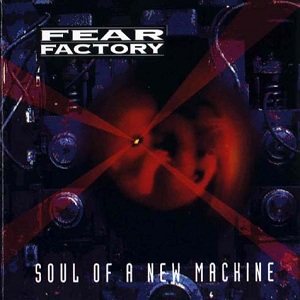Top Qs
Timeline
Chat
Perspective
Soul of a New Machine
1992 studio album by Fear Factory From Wikipedia, the free encyclopedia
Remove ads
Soul of a New Machine is the debut album studio by American industrial metal band Fear Factory, released on August 25, 1992, by Roadrunner Records. Although it was Fear Factory's first album to be released, it was actually their second album recorded. The demo album, Concrete was recorded in 1991 but not released until 11 years later. Soul of a New Machine is a combination of death metal and industrial metal with other elements such as grindcore.
This article needs additional citations for verification. (March 2017) |
Soul of a New Machine was remastered and re-released on October 5, 2004, in a digipak, together with the remastered Fear Is the Mindkiller EP.
Remove ads
Overview
Summarize
Perspective
Guitarist Dino Cazares has stated that Soul of a New Machine is a concept album, concerning man's creation of a machine that could be either technological or governmental. Bassist Christian Olde Wolbers described it the same way.[1]
Jason Birchmeier of AllMusic described the album as ushering in the alternative metal era of the 1990s.[2] Soul of a New Machine has also been described as death metal and industrial metal with elements of grindcore.[3][4][5][6] Author Colin Larkin of The Encyclopedia of Popular Music wrote "Soul of a New Machine established Fear Factory as a genuine death metal force, with a good collection of songs delivered with originality and ferocity."[7]
The record featured a different conceptual style from Fear Factory's later works. "Martyr" is about someone who dies for a cause; "Leechmaster" is about relationship problems; "Scapegoat" was based on how Cazares was once wrongfully accused by the law; "Crisis" is an anti-war song; "Crash Test" concerns animal testing and "Suffer Age" is based on serial killer John Wayne Gacy. The other songs contain different themes. Samples from the movies Full Metal Jacket, Blade Runner, and Apocalypse Now are heard sporadically throughout the album.
Remove ads
Reception
AllMusic's Jason Birchmeier remarked that "Fear Factory were quite ahead of their time in 1992". The critic also noted the diversity of the genres featured in the recording, saying that "Soul of a New Machine was so groundbreaking because it [fused] together some of the best aspects of numerous metal subgenres", which "[resulted] in a unique sound".[2]
Rock Hard rated the album highly, saying that the sound of the album was strange, indescribable yet required listening. Rock Hard also complimented the blending of various sub-genres, with particular note to Burton Bell for managing such an eclectic set of vocals.[9]
- Kerrang! (p. 61) - "[The album] contains all the unrefined qualities that would soon make Fear Factory legendary."
Remove ads
Track listing
All lyrics are written by Burton C. Bell except where noted; all music is composed by Dino Cazares and Raymond Herrera.
Credits
Fear Factory
- Burton C. Bell – lead vocals (credited as "Dry Lung Vocal Martyr"), programming (credited as "Hardware, Utilities"), lyrics, intro programming (10)
- Dino Cazares – guitars (credited as "Discordant"), bass, arrangements
- Raymond Herrera – drums (credited as "Variable Percussive Wrecking")
- Andrew Shives – bass (credited as "Discordant Bass")[a]
Additional personnel
- Colin Richardson – producer, mixing, add. performer (9)
- Steve Harris – engineer, mixing
- Bradley Cook – assistant engineer
- Rober Fayer – assistant engineer, add. performer (9)
- Eddy Schreyer – mastering
- Ted Jensen – remastering (Expanded Edition)
- Satok Lrak, Karl Kotas (spelled backwards) – computer graphics, art direction
- Joe Lance – photography
- Lora Porter – executive producer, add. performer (9)
- Otis – sampling (credited as "Sample God"),
- Darius Seponlou – introduction (5), intro programming (5)
- Monte Conner – A&R
Remove ads
References
Wikiwand - on
Seamless Wikipedia browsing. On steroids.
Remove ads

